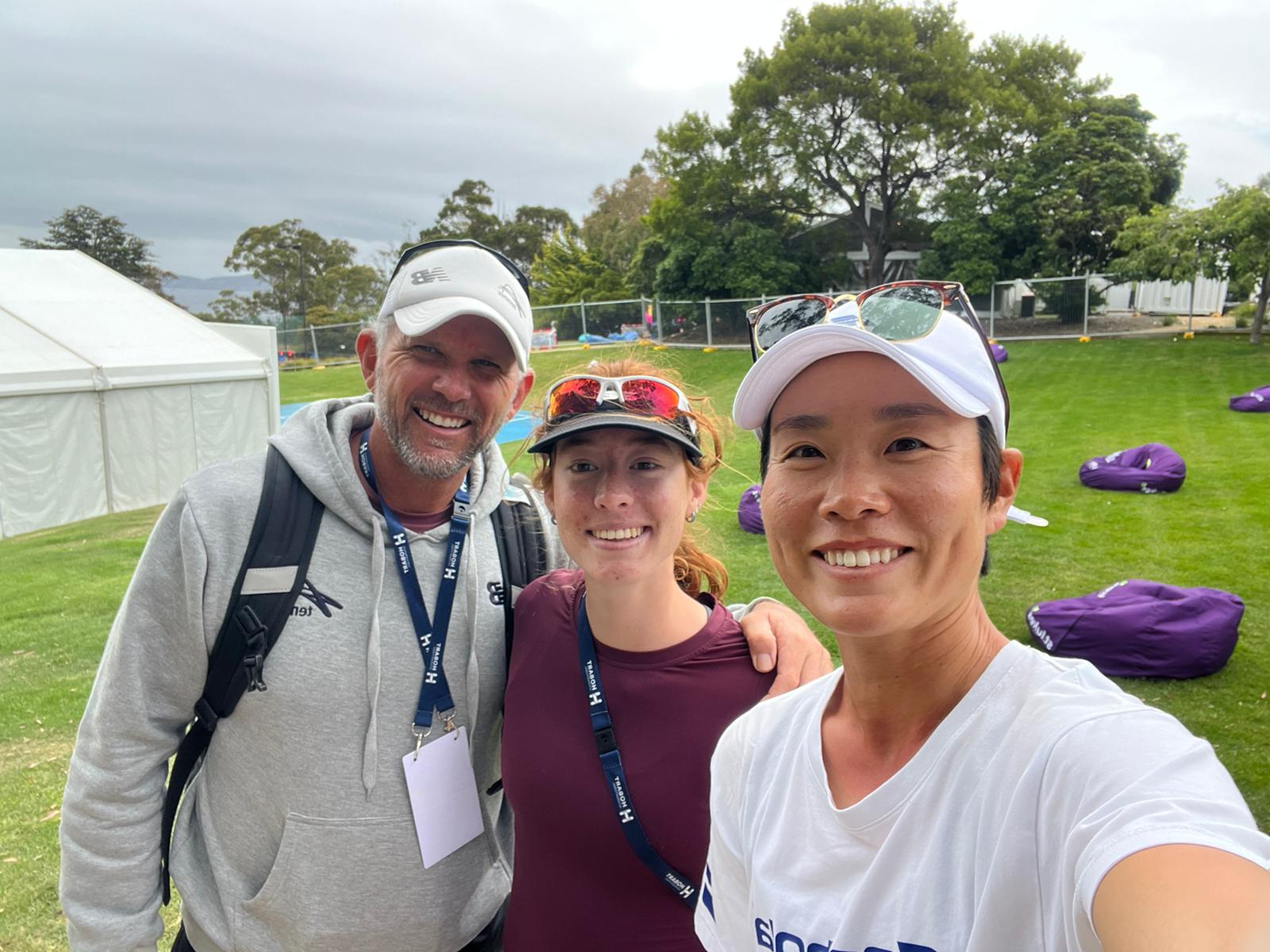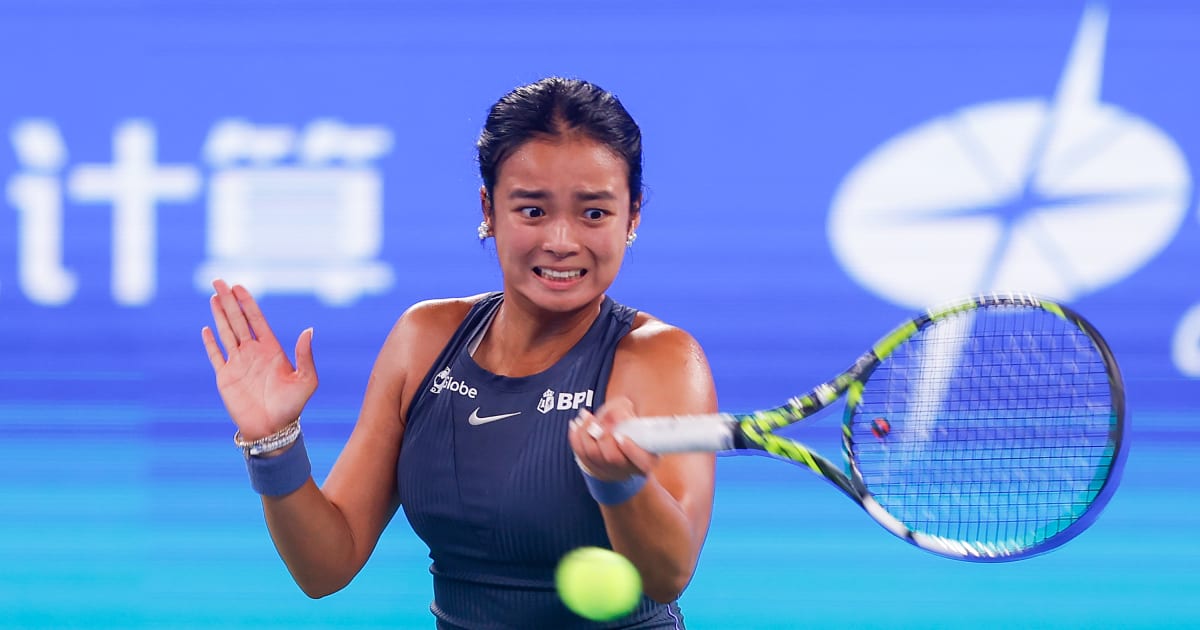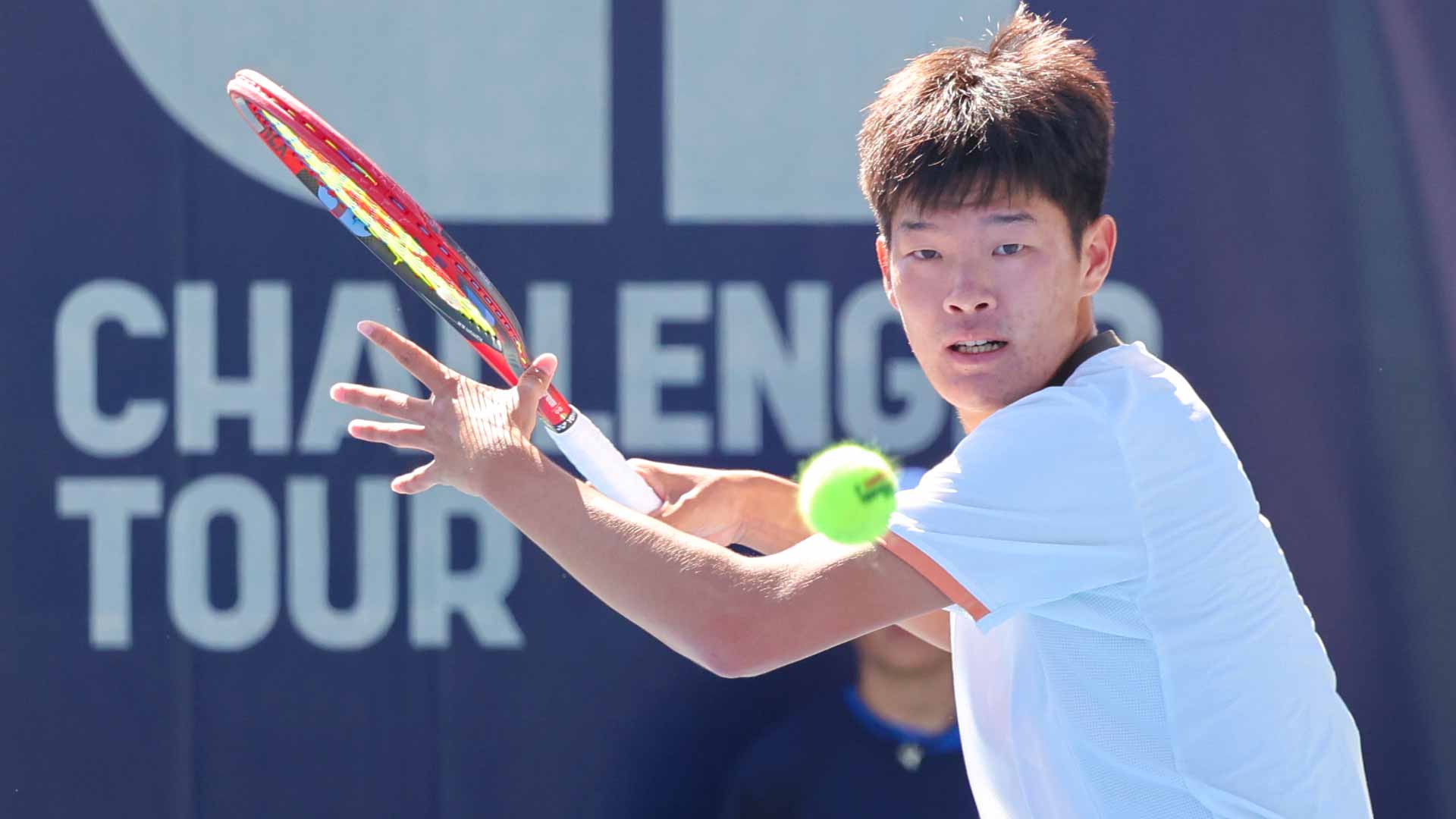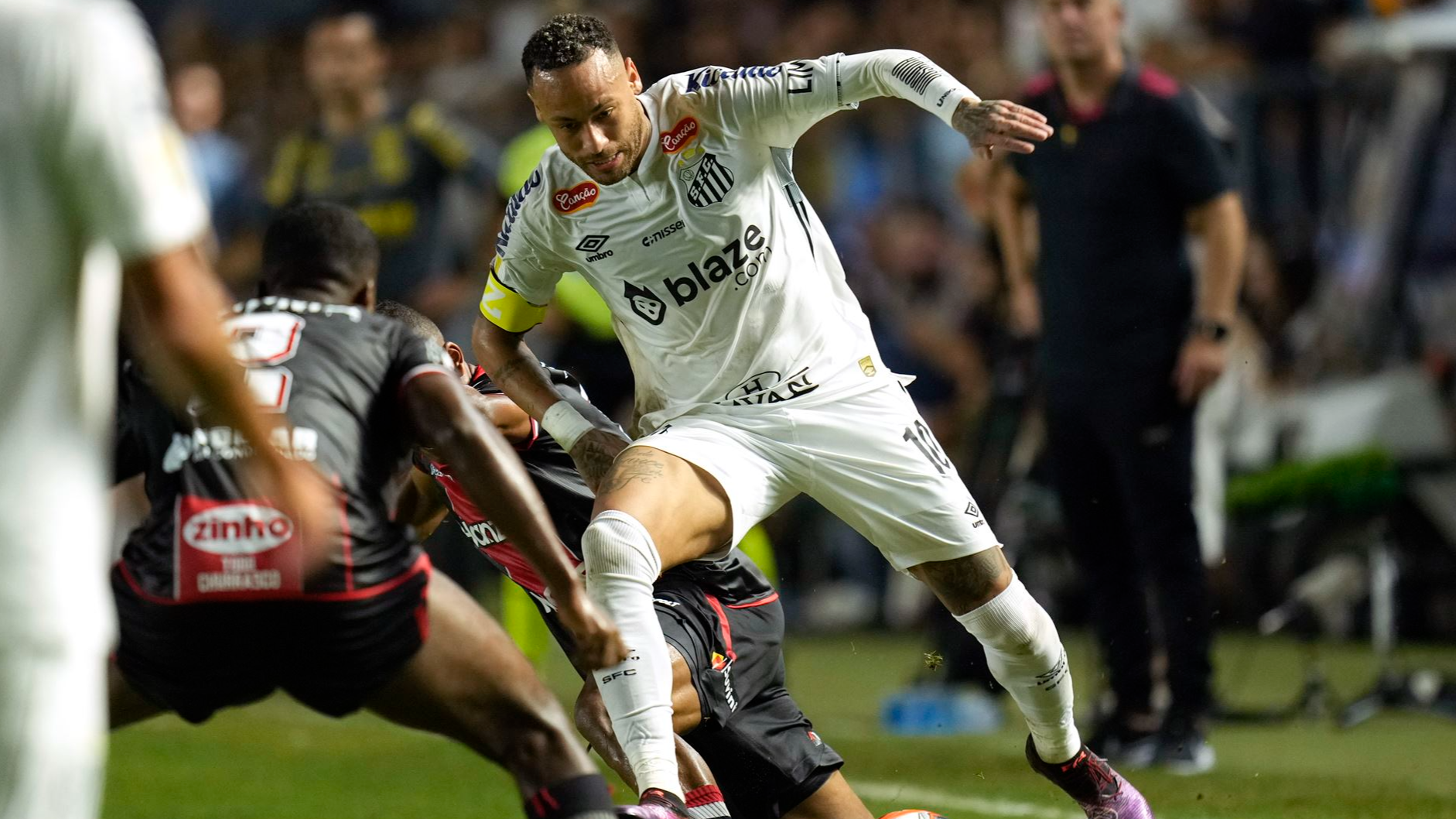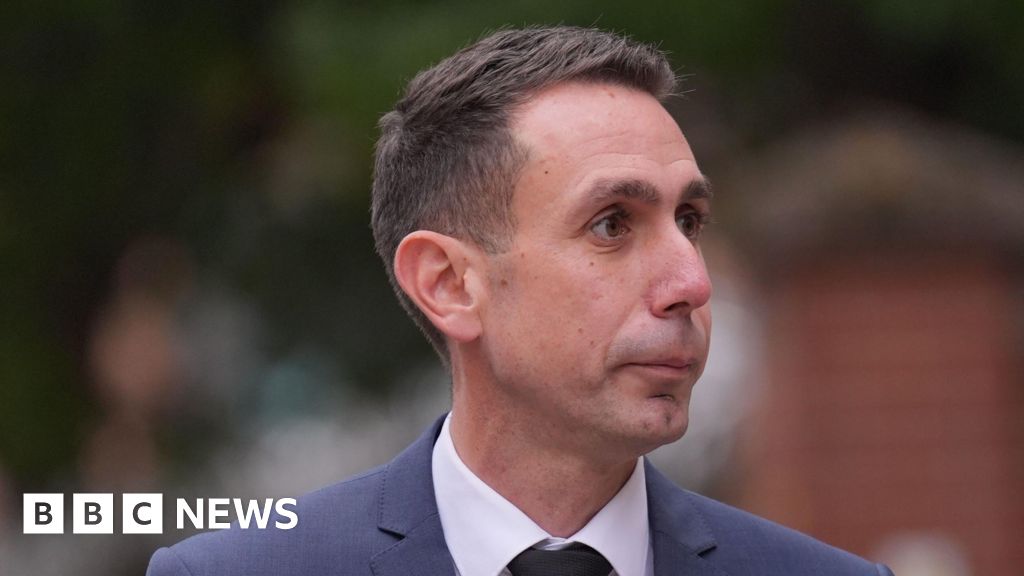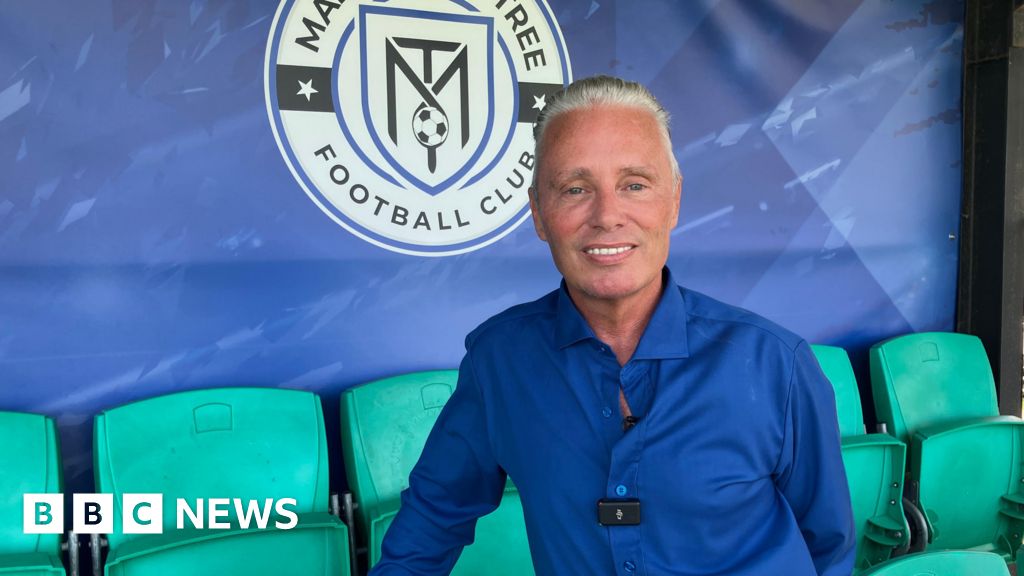Novak Djokovic has completed tennis. He may end the ATP season with his zaniest achievement

The ultimate Novak Djokovic tennis moment of the fall, and perhaps the year, occurred late in his quarterfinal win over Zizou Bergs at the Shanghai Masters.Bergs was serving at 5-5, 30-30 in the second set, having broken Djokovic, who had been serving for the match, in the previous game. Given the hot and humid conditions in China’s biggest city, and the 38-year-old’s cavalcade of physical issues, getting the match done in two sets felt reasonably vital for Djokovic.By the third shot of the point, though, Bergs had his opponent on the ropes, sending him scrambling to his left to retrieve a hard forehand. Djokovic threw up a defensive lob. Bergs got underneath it and sent an overhead back, though not a great one. And then the same thing happened again. And again. And again, off a forehand this time. And again, off an overhead, which Djokovic somehow squat-paddled away with an awkward survival shot that had the Belgian moving to his right.Still, now Bergs had a short forehand sitter to put away. And unlike the other balls, this one had bounced, which should have made it easier than all the others. Of course, he missed it wide. Point Djokovic, who had the crowd back in the palm of his hand, ready to break Bergs and serve out the match in the next game.The guy just doesn’t go away. And when he’s engaged, happy, somewhere he wants to be and not facing an opponent named either Jannik Sinner or Carlos Alcaraz, he usually figures out a way to win.Djokovic being Djokovic, he had an experiential edge from going deep in Shanghai so many times before, making the tournament’s semifinals in 11 of his 14 appearances and winning the title four times.“It’s very difficult to smash here, because once you send the ball really high up in the sky, it’s like it just goes into this dark spot, and it’s really hard to see when you play at night,” he explained in his news conference. “He actually missed an overhead break point at 3-2 first set. So I felt like he’s not feeling very confident in the overhead.”In between the moments like this one and running into the wall made of Sinner and Alcaraz a few times over, Djokovic has spent the past 18 months saying that he no longer cares about the world rankings, the points and the permutations that compute a player’s week-to-week existence. He was even saying it when he was still hoovering Grand Slam titles, just two or three years ago. He is not about to orient his schedule around winning the 10 events he needs to break Jimmy Connors’ ATP Tour record of 109.So how is a guy who just finished his first tour-level event since mid-May; who back in the spring said he had to adjust to a “new reality” of more frequent losses to players ranked below him, and who hasn’t played anything close to a full schedule in 2025, in with a realistic chance of starting next season as the world No. 3? Djokovic has pulled off myriad hard-to-fathom accomplishments in his career: 24 Grand Slam singles titles; 428 weeks at No. 1; 100 singles titles and counting — including winning Olympic gold at age 37, after years of yearning for it.But starting 2026 at No. 3, by winning more points than all those players a decade or more his junior, while playing much less often than they do, would be one of the zaniest.He is third in the Race to Turin, named for the Italian city hosting the $15million (£11.2m), round-robin ATP Tour Finals, reserved for the top eight singles players and doubles pairs each year, next month. Aside from winning certain tournaments, including the four Grand Slams and a few other important ones, punching a ticket to that event is what most players prize. For the regulars, it’s the reward for another elite season. For first-time entrants, it concludes the best year of their career so far.Alcaraz and Sinner, who sit above Djokovic, are the runaway leaders of men’s tennis right now. Everyone else? After so many seasons, and with all the mileage on Djokovic’s odometer, the best of the rest still can’t find a way past him. He gives them a huge headstart, too, by staying on the sidelines for so many tournaments that together offer thousands of rankings points. And when Djokovic does play an event other than the majors, not even he seems to know where his head will be on the first point of his opening match, or whether he will feel like fighting for something midway through.But still, the 1990s generation who have waited over a decade for his powers to recede, the youth of the years to come and every men’s tennis player bar two may all end this year craning their necks to look up at this giant of the sport.At the heart of Djokovic’s strategy — and even that word implies the intent to reach a destination that Djokovic does not really treasure — is an understanding of how potent a weapon motivation remains for him.In the third decade of his professional career, his supply of that motivation is limited. He can’t fake it. He can’t turn it on and off when he wants to. He either feels it or he doesn’t. And if he doesn’t, he loses.At the Shanghai Masters, as he grimaced and limped past Jaume Munar, vomiting on the court and hobbling, and beat Bergs before picking up one injury too many against qualifier Valentin Vacherot in the semifinals, it was hard to understand how he kept going.But he has a keen sense of when and where he might feel the desire to do so.The four Grand Slams are top of the list, which is convenient because they offer the most rankings points. They also reward players who know how to manage their intensity and focus across the best-of-five sets format, something Djokovic may know better than anybody.He has played more than 450 Grand Slam matches, including 37 finals and 52 semis. When healthy, he knows how to beat Alexander Zverev, No. 4 for points this year, on the German’s favorite clay at the French Open. He knows how to take apart Taylor Fritz, No. 5, in front of a home crowd at the U.S. Open. He knows how to help every type of player beat themselves, from the flamboyant and aggressive Bergs to the relentless Munar, both of whom he conquered in Shanghai.Djokovic played all four Grand Slams this year and made the last four at each one — an epic year for all but three other players on tour: Alcaraz, Sinner and Zverev. That got him 2,880 rankings points, more than anybody earned across the four most important tournaments, save for Alcaraz and Sinner. That’s 60 percent of the points he has earned all year.Sinner has been more efficient, but only slightly and not by choice, having missed three months while serving an anti-doping suspension. The other players jockeying for spots in Turin have compiled their points throughout the season.Until this fortnight at the Shanghai Masters, one of his favorite tournaments, in front of fans who have adored him for years, Djokovic’s only other noteworthy event was the Miami Open in March, where he lost in the final to Jakub Menšík. He collected 650 points for that.Had Djokovic not earned a single point anywhere else all season, he’d still be in 10th place in the race for the year-end finals. All he had to do to inch into eighth was enter a handful of the other ATP Masters 1000s, because his world ranking afforded him the first-round byes in those tournaments which let him earn points just for showing up. Which is about all he did at the BNP Paribas Open, Monte Carlo Masters and Madrid Open in March and April. He lost his first match, and played terrible and at-times-disinterested tennis, at all three events.He tends to get that way when he’s not playing very well.Slightly panicked about his form ahead of the French Open, he signed up to play the Geneva Open, a 250 — the lowest tier of the ATP. He won it, for his 100th title, and reacted with the polite smile of a homeowner greeting a courier.The rest of the points he earned before Shanghai came from winning two matches in Brisbane, before the start of the Australian Open, and an appearance at February’s Qatar Open, where he lost to Matteo Berrettini long before he should have been playing on the injured left hamstring he took away from Melbourne. Djokovic has a close business relationship with Qatar, and wanted to appear there so long as he could be upright.Last year was a little different, but barely. He played 12 events this season to 11 then, plus a Davis Cup tie for Serbia. In 2024, a torn meniscus in his knee sidelined him for a month. This time, it was his hamstring.The best way to contexualize Djokovic’s efficiency is to consider Fritz and Zverev. Both of them have been banged up too, but Fritz has played 20 ATP Tour events, plus the Laver Cup and Davis Cup; Zverev has played 21 tournaments on the tour and the Laver Cup. They are 745 and 300 behind Djokovic respectively for points won in 2025.They may yet catch him, via the indoor tournaments across Europe which culminate in the Paris ATP Masters 1000, where Zverev is defending champion, before the ATP Tour Finals start November 9. Djokovic will likely be on vacation and in training mode while all that is happening.He plans to play a 250 tournament in Athens that his family business owns, and which ends the day before the ATP Tour Finals begin. It would then be a quick flight up the Adriatic Sea to northern Italy for the No. 3 men’s player of the year, who only cares about that number in terms of where it puts him in the draw to try to beat Alcaraz and Sinner at the Grand Slams: as far away as possible, for as much of the tournament as possible.Djokovic will probably get other chances. He has given no indication of making any plans to stop playing. Winning another Grand Slam may seem unlikely, but Shanghai presented the scenario where it can happen: Alcaraz out with an injury; Sinner waylaid by cramps and exiting early. Djokovic was there to pick up the pieces, but the other factor in this great equation of his late career, his own body, could not quite stay the course.Still, he just won’t go away.Will he show up in Turin, to duke it out with his rivals one last time this season?If he feels like it.

